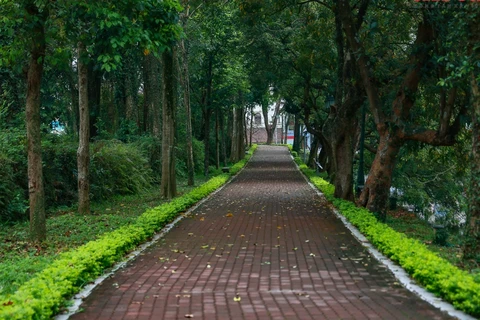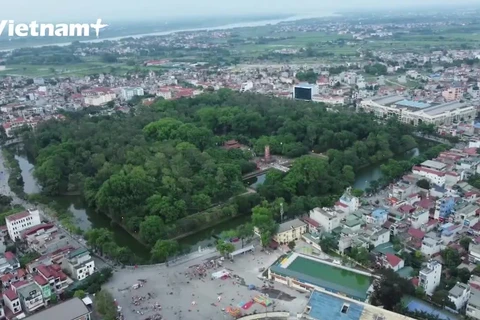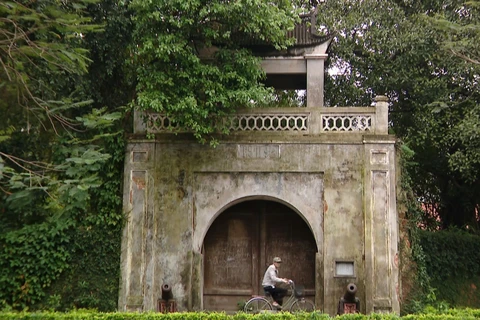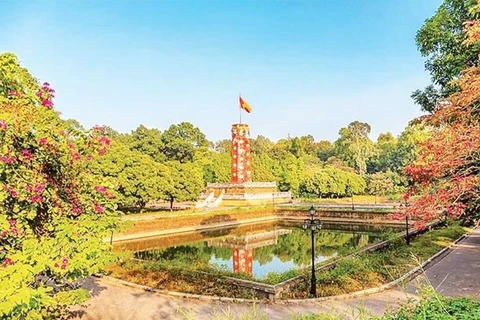Hanoi (VNA) - Built in 1822 under the reign of King Minh Mang of the Nguyen Dynasty, the Son Tay Ancient Citadel is an ancient military construction built from laterite, making it one of the most unique citadels in Vietnam.
Over the past two centuries, it has been conserved, maintaining many values in terms of culture, history, military architecture, and scientific construction.
Unique military laterite citadel
According to the People’s Committee of Son Tay town, the “Son Tay Ancient Citadel” used to be one of the four protectors of Thang Long city, the western gate of the capital. It boasts a long history of protecting the city’s perimeter and of the culture imbued with a tradition of patriotism and revolution.
Through the history of the nation, the Son Tay citadel has always held a strategic military position, serving as one of the firm perimeter walls to protect Thang Long in the past and Hanoi at present.
On the basis of his many years of archaeological studies on Son Tay Ancient Citadel, Chairman of the Vietnam Archaeology Association Tong Trung Tin held that the structure is representative of a period which saw the most citadels built in Vietnam. Through ups and downs, the Son Tay Citadel remains as one of the clearest vestiges that can attest to the techniques used in the building of military defence constructions in the north at that time.
The construction was built completely from laterite – a strong material that meets the requirement on sustainability for defensive structures and it is also largely available in the locality.
The square facility measures about 400 metres on each side. The original building plans show that the citadel measured about 5 m in height, 6 m on its base and 4 m on its top surface.
The citadel was surrounded by a moat 3 m deep, 20 m wide, and about 2,000 in perimeter. The moat was connected to Tich Giang River at its southwestern corner. The main axis of the citadel was the one connecting its front and rear gates.
The construction had four gates facing in each direction, to the north, south, west, and east. On top of the gates were watch towers, and on the surface of the walls were firing mounds.
The most important structures inside citadel were a flag tower and the Kinh Thien palace. The tower stood 18 meters high and served as both the place for raising the national flag and as a watch tower. Meanwhile, the palace was used as a place for kings when they made inspection tours of the north. In the past, there used to be residences for local mandarins, banks, food stores, and arsenals.
Recognising the importance of culture, history and unique construction techniques of the citadel, the Indochinese Governor in 1924 issued a decree to preserve the structures. The Ministry of Culture, Sports and Tourism in 1994 listed it as a historic relic on a national level.
Preserving Son Tay Ancient Citadel’s values
The Son Tay Ancient Citadel is a cultural and historical relic, and the unique military construction attracts large crowds of visitors to see the site each year.
Visiting it in any season of the year, tourists will have a chance to enjoy the view of the beautiful natural setting of green buds, red flowers and yellow leaves. The citadel also functions as a recreation and leisure park, sometimes described as the lungs of the neighborhood urban area due to its rich vegetation.
On the basis of the historical and cultural values of the citadel and its unique military architecture, the People’s Committee of Son Tay town is proposing the building of a dossier of recognition of the Son Tay Ancient Citadel as a special national relic.
The celebration of the 200th anniversary of the Son Tay Ancient Citadel, to be held on November 12, will be an important event helping to raise the sense of responsibility in preserving the value of the relic, thus boosting tourism and improving people’s spiritual lives.
Secretary of the Son Tay Party Committee Tran Anh Tuan said local authorities have been focusing their efforts on taking various measures to awaken the potential of the relic. The building of the dossier is one of the key tasks of the locality.
Meanwhile, Vice Chairman of the People’s Committee of Son Tay town Le Dai Thang said that on the occasion, many cultural, sport and tourism activities have been held, including exhibitions on the relic, art performances, and an international hot air balloon festival./.


























